My programming experience
Go to the bottom, “Summing it up”, for the TL;DR.
The day I turn this website into a portfolio/CV-like thing will come sooner or later, and arguably that’s a better use for the domain gbl08ma.com than this blog with posts nobody cares about – except when I rant about new operating systems from Microsoft. But if you really care about such posts, do not worry: the blog will still exist, it just won’t be as prominent.
Meanwhile, and off-topic intro aside, the content usually seen on such presentation websites everyone-and-their-cat seems to have these days, will have to wait. In anticipation for that kind of stuff, let’s go in a kind of depressing journey through my eight years programming experience.
The start
The beginning was what many people would consider a horror movie: programming in Visual Basic for Applications in Excel spreadsheets, or VBA for short. This is (or was, at the time; I have no idea how it is now) more or less a stripped down version of VB 6 that runs inside Microsoft Office and does not produce stand-alone executables. Everything lives inside Office documents.
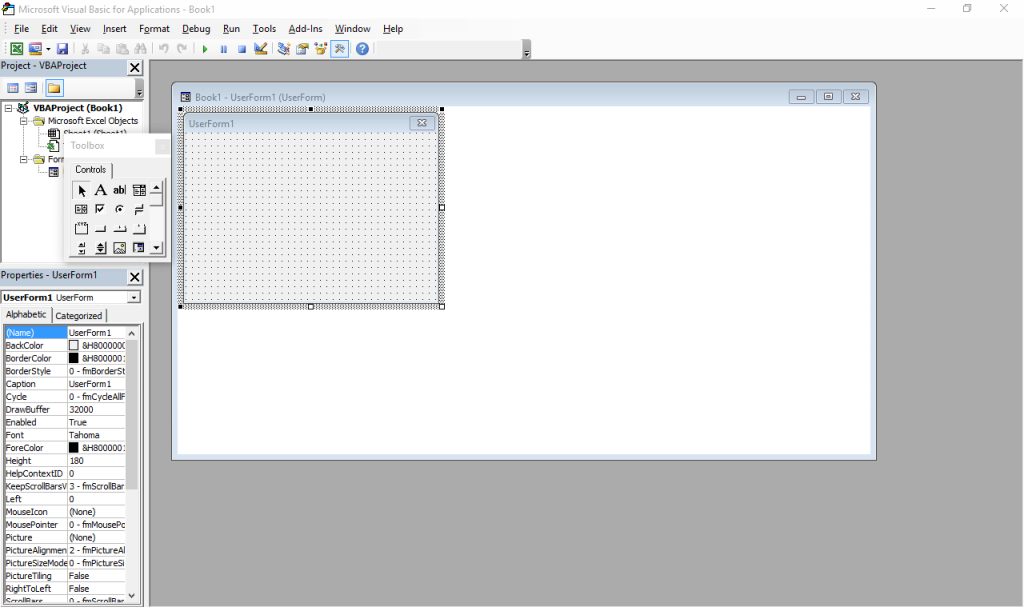
It still exists – just press Alt+F11 in any Office window. Also, the designer has Windows 7 Basic window styles… on Windows 10, which supposedly ditched all that?
I was introduced to it by my father, who knows his way around Excel pretty well (much better than I will probably ever will, especially as I have little interest). My temporal memory is quite fuzzy and I don’t have file timestamps with me for checking, so I was either 9, 10 or 11 years old at the time, but I’m more inclined to think 9-10. I actually went quite far with it, developing a Excel-backed POS system with support for costumer- and operator-facing character LCD screens and, if I remember correctly, support for discounts and loyalty cards (or at least the beginnings of it).
Some of my favorite things I did with VBA, consisted in making it do things it was not really designed for, such as messing with random ActiveX controls and making it draw strange-looking windows (forms) and controls through convoluted Win32 API calls I’d have copied from some website. I did not have administrator rights to my computer at the time, so I couldn’t just install something better. And I doubt my Pentium III-powered computer, already ancient at the time (but which still works today), would keep up with a better IDE.
I shall try to read these backup CDs and DVDs one day, for a big trip down the memory lane.
Programming newb v2
When I was 11 or 12 I was given a new computer. Dual core Intel woo! This and 2GB RAM meant I could finally run virtual machines and so I was put on probation: I administered the virtual computers, and soon the real hardware followed (the fact that people were tired of answering Vista’s UAC prompts also helped, I think). My first encounter with Linux (and a bunch other more obscure OS I tried for fun) was around this time. (But it would take some years for me to stop using Windows primarily.)
Around this time, Microsoft released the Express (free) editions of VS 2008. I finally “upgraded” to VB.NET, woo! So many new things to learn! Much of my VBA code needed changes. VB.Net really is a better VB, and thank Microsoft for that, otherwise the VB trauma would be much worse and I would not be the programmer I am today. I learned much about the .NET framework and Visual Studio with VB.NET, knowledge that would be useful years later, as my more skilled self did more serious stuff in C#.
In VB.NET, I wrote many lines of mostly shoddy code. Much of that never saw the light of day, but there are some exceptions: multiple versions of Goona Browser made their way to the public. This was a dual-engine web browser with advanced UI, and futuristic concepts some major players copied, years later.
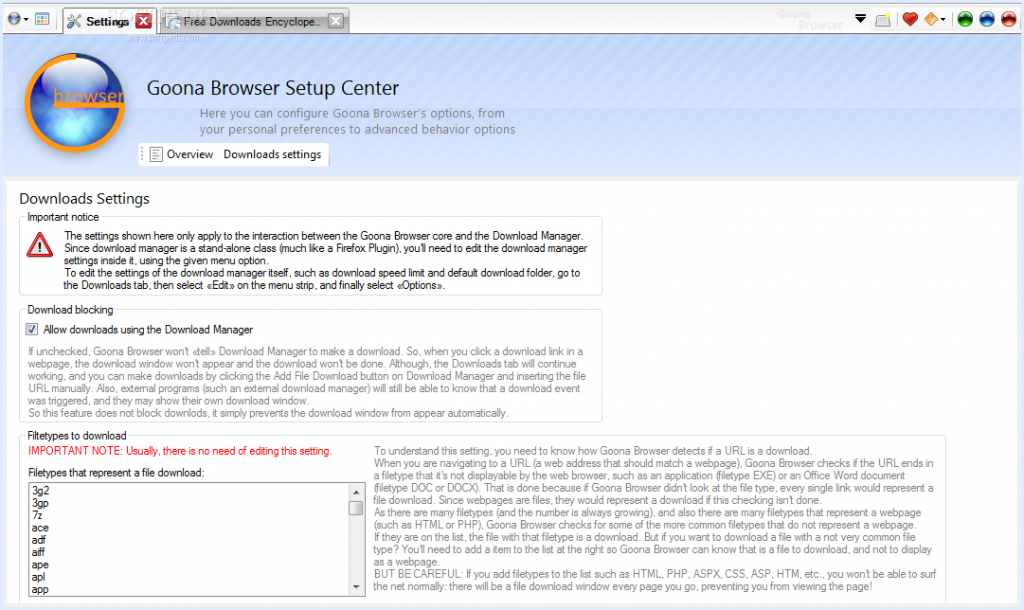
How things looked like, in good days (i.e. when it didn’t crash). Note the giant walls of broken English. I felt like “explain ALL the things”! And in case you noticed the watermark: yes, it was actually published to Softpedia.
If you search for it now, you can still find it, along with its website which I made mostly from scratch. All of this accompanied by my hilariously broken English, making the trip to the past worth its weight in laughs. Obviously I do not recommend installing the extremely buggy software, which, I found out recently, crashes on every launch but the first one.
Towards the later part of my VB.NET era, I also played a bit with C#. I had convinced myself I wanted to write an operating system, and at the time there was a project called COSMOS that allowed for writing (pretty limited) OS with C#… of course my “operating” systems were not much beyond a fancy command line prompt and help command. All of that is, too, stored in optical media, somewhere… and perhaps in the disk of said dual-core computer. I also studied and modified open source programs made in C# (such as the file downloader described in the Goona Browser screenshot) for my own amusement.
All this happened while I developed some static websites using Visual Web Developer Express as editor. You definitely don’t want to see those (mostly never published) websites, but they were detrimental to learning a fair bit of HTML and CSS. Before Web Developer I had also experimented with Dreamweaver 8 (yes, it was already old back then) and tried my hand at animation with Flash 8 (actually I had much more fun using it to disassemble existing SWFs).
Penguin programmer
At this point I was 13 or so, had my first contact with Linux more than done, through VMs and Live CDs, aaand it happened: Ubuntu became my main OS. Microsoft “jail” no more (if only I knew what a real jailed platform was at the time…). No more clunky .NET! I was fed up with the high RAM usage of Goona Browser, and bugs I was having a hard time debugging, due to the general code clumsiness.
For a couple of years, in terms of desktop development, I only made some Python scripts for my own amusement and played a very small bit with MonoDevelop every time I missed .NET. I also made a couple Lua scripts for Rockbox. I learned much about Linux usage and system maintenance as I used it more and more on my own computers and on my first Virtual Private Servers, which I got after much drama in the free web hosting communities. Ugh, how I hate CPanel.
It was around this time that g.ro.lt and n.irc.su appeared. g.ro.lt was a URL shortener that would later evolve into 4.l.to and later tny.im. n.irc.su was a social network built on Elgg, which obviously failed. I also made some smaller websites, like one that would take you to random image hosting websites, URL shorteners and pastebins, so you would not use the same service every time you urgently needed one. These represented my first experiences with PHP programming.
I have no pictures to show. The websites are long gone, not on the Internet Archive, and if I took screenshots, I have no idea where I put them. Ditto for the logos. I believe I still have the source code for the random-web-service website somewhere, at least the front page layout.
All this working on top of free stuff: free (and crappy) subdomains, free (and crappy) web hosting, free (and less crappy) virtual servers. It would take me some time until I finally convinced myself I needed to spend some money for better reliability, a gist of support and less community drama. And even then I would spend Bitcoin, which I earned back when it was really cheap, making the rounds of silly faucets and pulling money out of CPAlead-like offers through the use of multiple proxies (oh, the joy of having multiple VPS…). To this day I still don’t have a PayPal account.
This time, and when I actively developed tny.im (as opposed to just helping maintain it), was the peak of my gbl08ma-as-web-developer phase. As I entered and went through high school, I would get more and more away from HTML and friends (but not server maintenance), to embrace something completely different…
Low level, little resources: embedded systems
For high school math everyone had to use a graphing calculator. My math teacher recommended (out of any interest) Casio calculators because of their ease of use (and even excitedly mentioned, Casio leaflet in hand, the existence of a new and awesome color screen model that “did everything and some more”). And some days later I had said model in my hands, a Casio fx-CG 20, or Prizm, which had been released about a year before. The price difference from the earlier dot-matrix screen Casio calcs was too small to let the color screen go.
I was turning 15, or had just turned 15. I remember setting up the calculator and thinking, not much after, “I want to code for this thing”. Casio’s built-in Basic dialect is way too limited (and after having coded in “real” languages, Basic was silly). This was in September 2011; in March next year I would be releasing my first Prizm add-in, CGlock, a calculator PIN-locking software.
Minimalist look, yay! So much you don’t even notice it’s a color screen.
This was my first experience with C; I remember struggling with pointers, and getting lots of compilation warnings and errors, and run-time errors. Then at some point everything just “clicked in” and C soon became my main language. Alas, for developing native software for the Prizm, this is the only option (besides using C++ without most of its features, not even the “new” keyword).
The Prizm is a horrible platform, especially for newbie C programmers. You can’t use a debugger, nor look at memory contents, the OS malloc/free implementation has bugs (and the heap is incredibly small, compared to the stack) and there’s always that small chance some program damages your calculator, or at least corrupts your estimated files and notes. To this day, using valgrind and gdb on the desktop feels to me as science fiction made true. The use of alloca (stack allocation) ends up being preferred in relation to dynamic allocation, leading to awkward design decisions.

Example of all the information you can get about an error in a Prizm add-in. It’s up to you to go through your binary (and in some cases, disassemble the OS) to find out what these mean. Oh, the bug only manifests itself when compiling with optimizations and without symbols? Good luck…
There is a proprietary emulator, but it wasn’t designed for software development and can’t emulate certain things. At least it’s better than risking damage to expensive hardware. The SuperH-4 CPU runs at 58 MHz and add-ins have access to about 600 KiB of memory, which is definitely better than with classic z80-powered Texas Instruments calculators, but one still can’t afford memory- or CPU-intensive stuff. But what you gain in performance and screen resolution, you lose in control over the hardware and the OS, which still have lots of unknowns.
Programming for the Prizm taught me how it’s like to work without the help of the C standard libraries (or better, with the help of incomplete and buggy standard libraries), what a stack overflow looks like (when there’s no stack protection), how flash memories work, what DMA is, what MMUs do and how systems can be bricked when their only bootloader is not read-only. It taught me how compilers work from an end-user perspective, what kind of problems and advantages optimizations introduce, and what it’s like to develop parts of the C standard library.
It also taught me Casio support in Portugal (Ename) is pretty incompetent at fixing calculators, turning my CG 20 into a CG 10 and leaving two big capacitors out of a replacement main board. In this hardware topic, I learned quite a bit about digital logic from Prizm hardware discussions at Cemetech. And I had some contact with SH4 assembly and a glimpse into how to use IDA Pro. Thank you Casio for developing a system that works so well and yet is so broken in so many under-the-hood ways, and thank you Cemetech for briefly holding the Prizm higher than TI calcs.
I developed other add-ins, some from scratch and others as ports of existing PC software (such as Eigenmath). I still develop for the Prizm from time to time, but I have less and less motivation as the homebrew community has stagnated and I use my Prizm much less, as I went to university. Experience in obscure calculator platforms does not make for a nice CV.
Yes, in three years or so I went from the likes of Visual Studio to a platform where the only way to debug is to write text to the screen. I still like embedded and real-time programming a lot and have moved to programming more generic and well-known things such as the ESP8266.
Getting in the elevator
During the later part of high school (which I started in the fall of 2011 and ended in the summer of 2014), I did more serious Python stuff, namely Mersit, later deprecated in favor of Picored, which is not written in Python but in Go. Yes, I began trying higher-level stuff again (higher level, getting in the elevator… sorry, I’m bad at jokes).
My first contact with Go was when I was 17, because I wanted to develop something that ran without external dependencies (i.e., unlike Java or .NET) and compiled to native code. I wanted to avoid C/C++, but I wasn’t looking for “a better C” either, so Rust was not it. Seeing so much stuff about Go at Hacker News, one day I decided to try my hand at it and I like it quite a lot – I’m still unsure if I like it because of the language itself or because of the great libraries one can use with it, but I think both play an important role.
This summer I decided to give C# another chance and I’m quite impressed – turns out I like it much more than I thought. It may have something to do with trying it after learning proper languages vs. trying it when one only knows VB. I guess my VB.NET scars are healed. I also tried a bit of Java, in my first contact with it ever, and it seems my .NET hate converted into Android API hate.
Programming with grades
University gave the opportunity (or better, the obligation) of having other people criticize my code. The general public could already see the open-source C code of my Casio Prizm add-ins, and even the ugly code of Goona Browser, but this time my code was getting graded. It went better than I initially thought – I guess the years of experience programming in different languages helped, especially as many of the people I’m being compared with have only started programming this year.
In the first semester we took an introductory programming course, which used Python, and while it was quite easy for me, I took the opportunity to learn Python to a greater depth than “language in which to write quick and dirty glue code”. You see, until then I had not used classes in my Python code, for example. (This only goes to show Python is a versatile language, even if slow.)
We also took an introductory computer architecture course where we learned how basic CPUs work (it was good for gluing all the separate knowledge I already had about it) and programmed in assembly for a course-specifc CISC-like architecture. My previous experience with reading SH4 assembly proved quite useful (and it seems that nowadays the line between RISC and CISC is more blurred than ever).
In the second semester, I had the opportunity to exercise my C knowledge, this time not limited to the Prizm platform. More interestingly, logic programming, a paradigm I had no intention of ever programming in, was presented to us. So Prolog it was. It went much better than I anticipated, but as most other people who (are forced to) learn it, I have no real use for it. So the knowledge is there, waiting for The Right Problems(tm). I am afraid I’ll forget much of it before it becomes useful, but if there’s something picking C# up again taught me, is that I can pick up pretty fast skills learned and abandoned long ago.
The second year is about to begin and there’s some object-oriented programming coming, I hope I do well.
Summing it up
I have written non-trivial amounts of code in at least 8 languages: Visual Basic, PHP, C#, Python, Lua, C, Go, Java and Prolog. I have contacted with two assembly dialects and designed web pages with HTML, CSS and Javascript, and of course automated some tasks with bash or plain shell scripting. As can be seen, I’m yet to do any kind of functional programming.
I do not like “years of experience” as a way to measure language proficiency, especially when such languages are learned for use in short-lived side projects, so here’s a list with an approximate number of lines of code I have written in each language.
- C: anywhere between 40K lines and 50K lines. Call it three years experience if you will. Most of these were for Prizm add-ins, and have since been rewritten or heavily optimized. This is changing as I develop less and less for the Prizm.
- PHP: over 15K lines, two years if you want to think that way. The biggest chunk of these were for developing the additions to YOURLS used in tny.im, but every other small project takes its own 200-500 lines of code. Unfortunately, most of this is “bad” code, far from idiomatic. The usual PHP mess, you know.
- Python: at least 5K lines over what amounts to about six months. Of these, most of the “clean” lines (25-35%) were for university projects.
- Go: around 7K lines, six months. Not exactly idiomatic code, but it’s clean and works well.
- VBA: uh, perhaps 3 or 4K lines, all bad code 🙂
- VB.NET: 10K lines or so, most of it shoddy code with lots of Try…Catch to “fix” the problems. Call it two years experience.
- C#: 10K lines of mostly clean and documented code. One month or so 🙂
- Lua: mostly small glue scripts for my own amusement, plus some more lines for use in games such as Minetest, I estimate 3-4 K lines of varying quality.
- Java: I just started, and mostly ported C# code… uh, one week and 1.5K lines?
- HTML, CSS and JS: my experience with JS doesn’t go much beyond what’s needed to modify DOM elements and make simple AJAX requests. I’ve made the frontend for over 5 websites, using the Bootstrap and INK frameworks.
- Prolog: a single university assignment, ~250 lines or one month. A++ impression, would repeat – I just don’t see what for.
In addition to all this, I have some experience launching the programs and services I make – designing logos/branding, versioning, keeping changelogs, update instructions, publishing, advertising, user support. Note that I didn’t say I’m good at any of these things, only that I have experience doing them, for better or worse…
Things I’d like to have more experience with:
- Continuous integration / testing in general;
- Debugging code outside of .NET/Visual Studio and printing debug lines in C;
- Using Git and other VCS in big repos/repos with more people (I want to see those merge conflicts and commits to the wrong branch coming);
- Server-side web development on something other than PHP and Go. And learning to use MVC frameworks, independently of the language;
- C++ (and Java, out of necessity. Damned Android);
- Game development. Actually, this is how many people start, but I’m so cool that I started by developing POS software 🙂
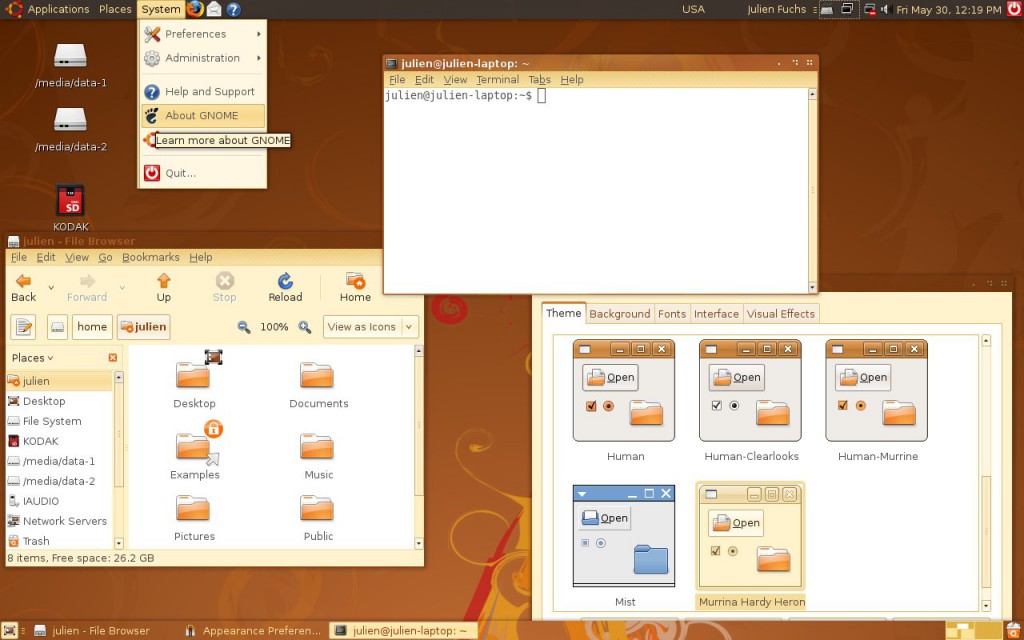
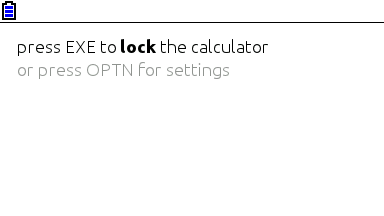
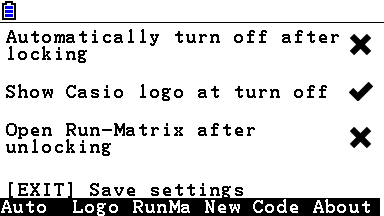


Comments